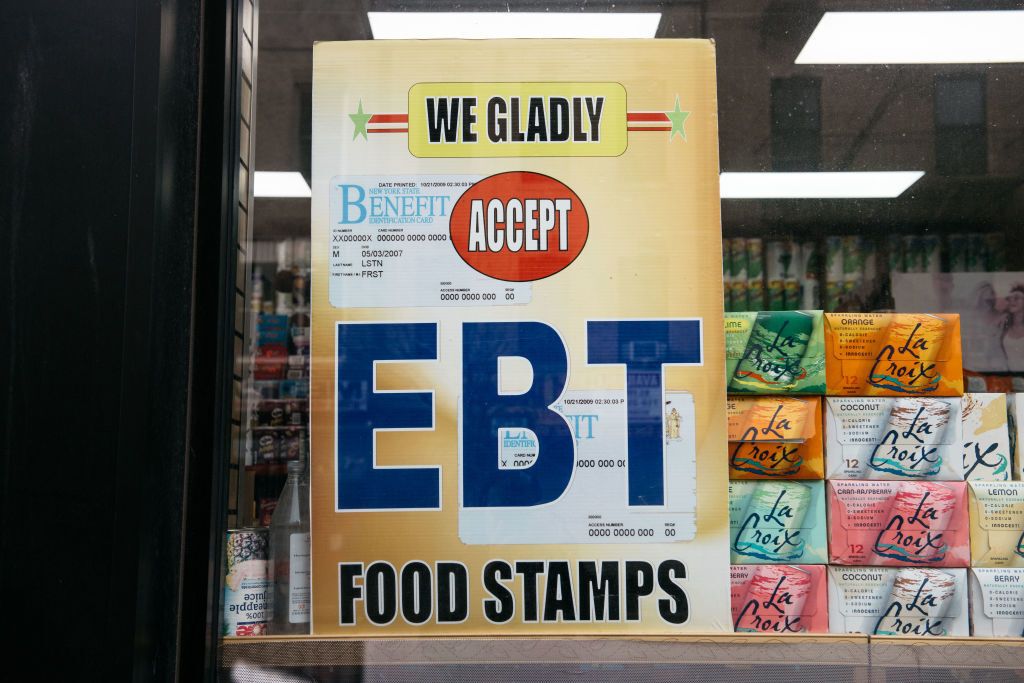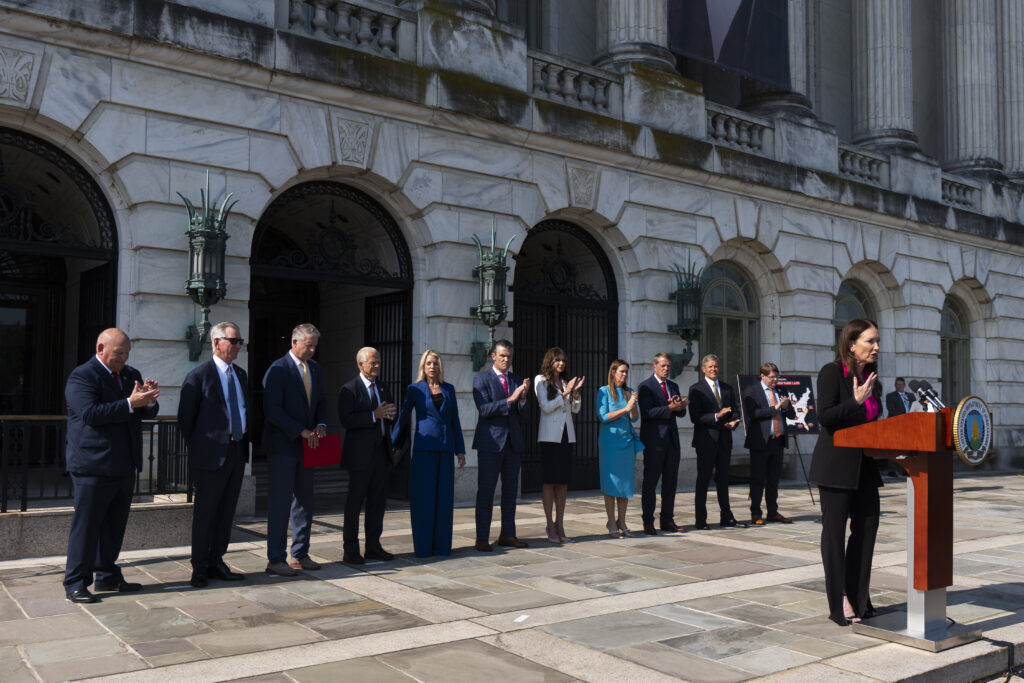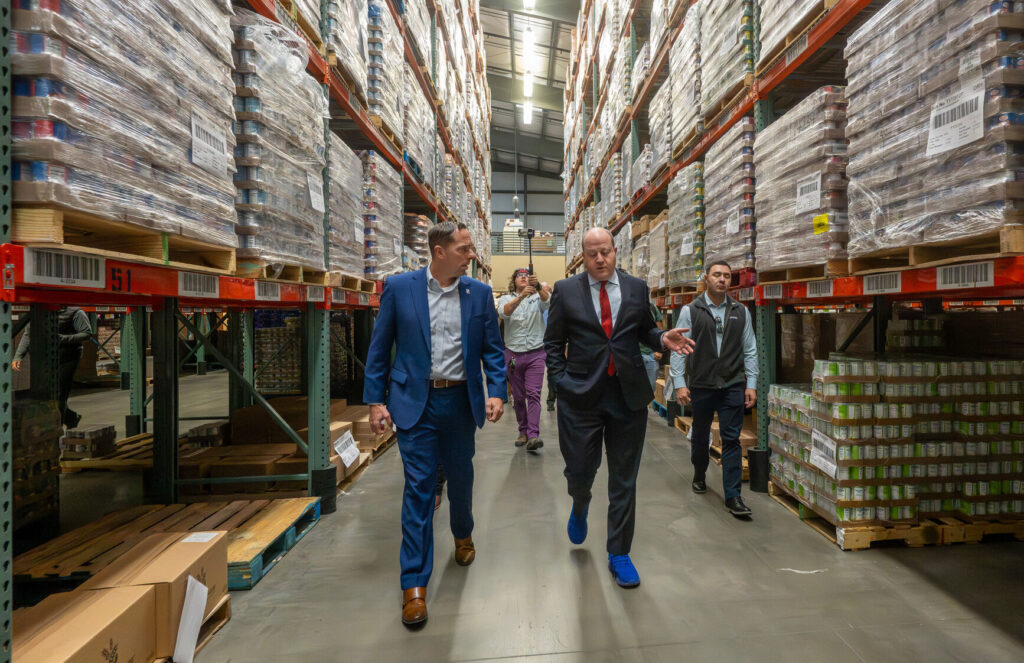Colorado lawmakers sign off on $10 million for food assistance as SNAP benefits are poised to run out

A panel of Colorado legislators on Thursday approved a $10 million cash infusion into food assistance for residents who are expected to lose food stamp benefits starting on Saturday amid the federal government shutdown.
But state policymakers and budget staffers said they fear that the plan is riddled with “holes,” describing it as akin to plowing a “field with a fork.”
Of particularly worry to policymakers is how exactly to get the assistance to beneficiaries of the federal Supplemental Nutrition Assistance Program, whose funding — the federal government said — will run out on Nov. 1.
Colorado has no actual ability to put those funds into the hands of the SNAP recipients because the state does not have a good tool to replace or supplement SNAP, lawmakers were told. Members of the legislature’s Joint Budget Committee also questioned why the governor only sought $10 million, given it would cost $120 million to fund SNAP this November.
Meanwhile, cities are scrambling, as they anticipate the loss of SNAP funding for their residents. In Denver, Mayor Mike Johnston announced a new food task force to help residents who might have a difficult time accessing food in the coming weeks.
The $10 million in state funding requested by Gov. Jared Polis will go to the state’s Community Food Assistance Providers Grant Program, which is administered by the state Department of Human Services.
SNAP beneficiaries will not receive direct assistance, as the state doesn’t have a mechanism for putting money into SNAP cards. And the amount is just a fraction of the cost of the program, which deeply troubled the Joint Budget Committee.
Requests for SNAP benefits have increased 44.3% over the last decade, with 328,698 households (about 600,000 Coloradans) receiving benefits through the first quarter of FY 2025-26.
The money will go to Feeding Colorado, which distributes assistance to five partner organizations throughout the state:
- Care & Share Food Bank for Southern Colorado, which has locations in Colorado Springs and Pueblo, plus a service area for the entire southern portion of the state; the area has 183,000 SNAP beneficiaries
- Community Food Share, which serves Boulder and Broomfield counties; the area has 22,000 families expected to lose SNAP benefits
- Food Bank for Larimer County, which serves Larimer County, where some 34,000 residents rely on federal program
- Food Bank of the Rockies, which has locations in Denver and Grand Junction
- Weld Food Bank, which is located in Greeley and serves Weld County
The Joint Budget Committee’s vote to set aside the $10 million — about 10% of the food stamp program’s cost for November — received unanimous support, though there was acknowledgment that SNAP beneficiaries will have to seek out that support from the food banks, instead of directly getting the assistance.
Tom Dermody, a member of the Joint Budget Committee staff, told Colorado’s legislators that the U.S. Department of Agriculture sent a letter on Oct. 10, telling all states to pause processing of SNAP benefits beginning Nov. 1.

An earlier U.S. Department of Agriculture memo issued on Sept. 30 initially said “multi-year contingency funds are also available to fund participant benefits if a lapse occurs in the middle of the fiscal year.” That contingency fund would keep the program running through much of November.
Nationwide, SNAP will cost $8 billion in November.
Democrats and other groups have insisted that $6 billion is available in the contingency fund and the USDA should tap into it, arguing it is obligated to use that money. The Center on Budget and Policy Priorities also said that the Trump administration should use a discretionary authority it already deployed to transfer funds into the Special Supplemental Nutrition Program for Women, Infants, and Children (WIC) — or tap into any legal authority — to continue funding for SNAP.
In a more recent memo, the USDA said the contingency funds are “not legally available to cover regular benefits.”
Blaming Democrats, the department said they refused to pass a budget and fund the regular monthly benefits for Fiscal Year 2026 and that SNAP contingency funds are only available to supplement the regular monthly benefits — when funding has been appropriated but insufficient to cover the program’s cost.
The contingency money is not available, the agency said, because the “appropriation for regular benefits no longer exists.” Instead, that money is only available for emergencies and disasters, such as hurricanes and floods.
The $10 million will come out of Colorado’s general fund reserve, but it must be paid back in the 2026-27 budget.
As for the funding not going directly to SNAP benefits, Dermody told the Joint Budget Committee: “Community fund assistance is the best way.”
Feeding Colorado and the Department of Human Services will try to target assistance as best they can, but the plan is a “rough proxy” for SNAP benefits, Dermody added.
He also acknowledged that the assistance likely won’t make it into all 64 counties, but that the state will try and target communities that will be the hardest hit.
“This solution is riddled with holes,” Dermody told lawmakers. In effect, he said, the state is trying “to plow a field with a fork, and the scale of this particular emergency vastly outstrips any ability of the state to mitigate it in a meaningful way.”

The committee’s members also questioned why the governor picked $10 million, when the program would cost about $120 million for November.
Sen. Barbara Kirkmeyer, R-Brighton, and Rep. Rick Taggart, R-Grand Junction, both asked the same question, noting that, with the ability of the food banks to leverage those funds at about 3 to 1, why not $40 million?
They also asked just how fast that assistance would get to those who need it.
Dermody said he’s been talking with the food banks over the past week and they’ve been working on how to do that since the shutdown started at the beginning of October. Food distribution based on that funding probably won’t happen until the second week of November, although the funds will go out on Nov. 1.
Dermody acknowledged that the $10 million figure seemed arbitrary, but said the amount appeared to be the most reasonable, given the budget deficit the state was in. The $10 million will add 3% to the general fund reserve deficit, which has already been tapped for $250 million to cover the budget shortfall in the 2025-26 budget.
“This is food, and I’m scared to death,” said Taggart, the Republican legislator. “Could we ask the governor’s office to supplement” this request?
“This money isn’t adequate, but the shutdown could last for months,” with one looming disaster after another, added Sen. Judy Amabile, D-Boulder. People will have to choose between eating and paying rent and utilities and while “we will see a massive amount of suffering, we must act prudently moving forward,” she said.
Kirkmeyer said she believes the governor could find a way to put more money into the assistance program, given that he sent $400,000 for pet rescue in Florida last year without legislative approval. She advocated for the state to tap its disaster emergency fund, which would require an emergency declaration from the governor.
“This is an emergency, whether man-made or natural,” she said, noting the 600,000 SNAP recipients in Colorado.
“Blame whomever you want,” but half of those 600,000 are children who will go hungry, she said, adding, “I don’t understand why the governor has not declared an emergency.”
The disaster emergency fund, as of Fiscal Year 2022, held $475 million. The governor declared a disaster emergency in September in the wake of the wildfires that hit Northwestern Colorado during the summer.
Earlier this month, the Joint Budget Committee signed off on a request for a separate $10 million for the Women, Infants & Children program to cover October’s costs and extended that approval through November, although without additional funding.
Colorado is among 25 states suing the federal government over the cutoff of SNAP benefits.
Meanwhile, Johnston, the mayor of Denver, estimated that about 100,000 Denverites are at risk of losing their food benefits on Saturday, with 30-50% of them being children.
The city’s new food assistance task force will create ways for residents to help with the food assistance effort by donating money, food or time at pantries and banks in each district, the mayor said. Johnston also said that the denvergov.org/food webpage will list all available food pantries with capacity and any businesses helping with the effort, as well as other resources.



